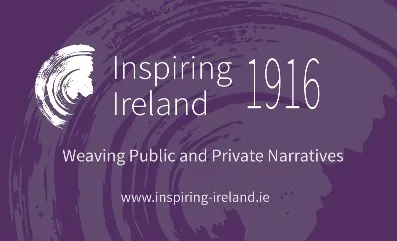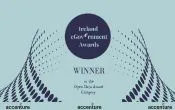From the Inspiring Ireland 1916 blog, Dr. Kathryn Milligan on the cultural cost of the 1916 Rising.
Inspiring Ireland 1916 blog: The cultural cost of 1916
Dr Kathryn Milligan, National Gallery of Ireland
A new blog reflecting on the Inspiring Ireland 1916 digital exhibitions, A Closer Look at Inspiring Ireland 1916 Objects, has been launched. Inspiring Ireland 1916 is the next phase of the multiple-award-winning cultural heritage resource Inspiring Ireland. The latest blog post, by Dr Kathryn Milligan, inaugural ESB Fellow at the ESB Centre for the Study of Irish Art at the National Gallery of Ireland, reflects on the cultural cost of 1916 by shedding light on a sensory world of furniture, textiles, and artworks that perished when the Royal Hibernian Academy building on Lower Abbey Street, Dublin was destroyed during Easter Week 1916. By delving into the compensation applications files of the Property Losses (Ireland) Committee, and others that also form part of the National Archives of Ireland collection in Inspiring Ireland 1916, she paints a previously unseen picture of Academy House and tells some of the hidden stories behind what was lost in the fire and the connections between Dublin and a global artistic economy.
On the 27 April, 1916, a shell fired from the Helga set alight a barricade on Lower Abbey Street. The blaze spread along the street, engulfing the premises of the Royal Hibernian Academy (RHA), then hosting its Annual Exhibition. Over five hundred works of art were on display, all of which were destroyed, along with the Academy’s holdings of fine art prints, books, and other materials. Claims by the Academy and its artists in the Property Losses (Ireland) Committee (PLIC) archive are vital documents in which the material world of the early twentieth-century Academy is captured, evoking the artistic milieu to be found in Dublin at this time. In his afterword to the recent publication, Making 1916: Material and Visual Culture of the Easter Rising, Nicholas Allen noted that ‘if the archive represents a material repository of historical experience, then the history of lost or destroyed objects, as may be recovered only in memory or in fragments, is imaginable in a language of sensation.’ This sensory world, conjured up by the descriptions of furniture, textiles and artworks are not only records of what was lost, but a reminder of the connections between Dublin and a global artistic economy. In addition to the property and goods owned by the RHA itself, the paintings lost to the flames also reflect the multifaceted interests and lives of the exhibitors: while all broadly academic rather than modernist in artistic technique, the different claims show that artists connected to empire, to the nationalist movement, those displaced by the First World War, collectors and enthusiastic amateurs, were brought together in the broad church of the Annual Exhibition.




